Skyline® Diffusers: Pro and Cons
Skyline® is a product name for a two-dimensional diffuser. It was created by RPG. It is a one-dimensional diffuser turned inside out. Most that are currently in the marketplace are based upon a prime number 11 which as a one -dimensional diffuser would be 9″ deep. If you were basing the Skyline® diffuser on a prime 13 it would be 12″ deep with the longest block at 12″. For each prime number increase, you achieve lower frequency diffusion. With more lower end diffusion comes more length on the longest blocks that are used to build the skyline and more weight that you must consider when installing the skyline diffuser. The build process for the Skyline® diffuser involves solid wood which is a great material to build diffusers out of but the weight and length must be considered in any real-world application. When considering the Skyline® diffuser: pro and cons you must look at its origin of design which is the quadratic diffuser.
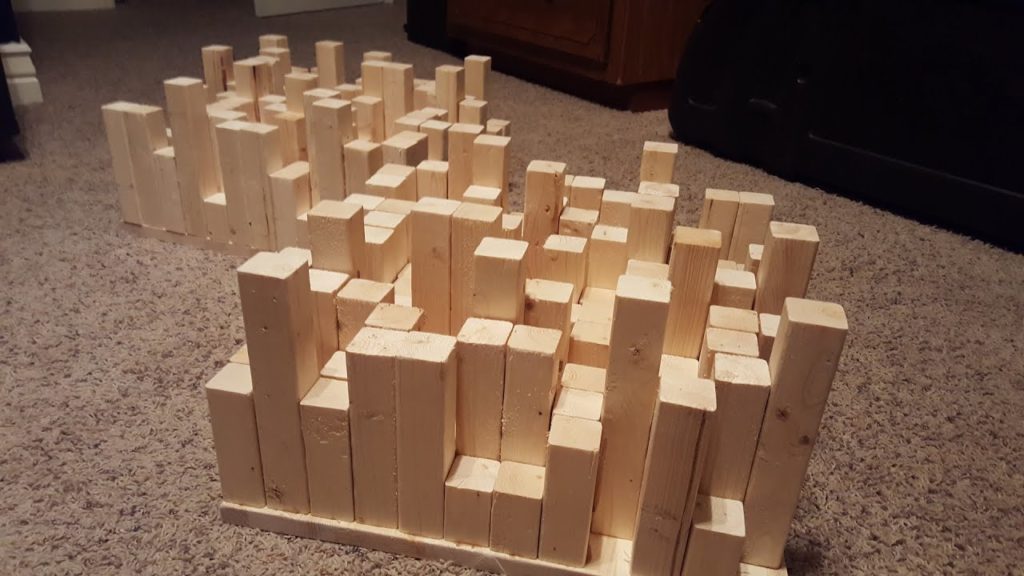
Quadratic Diffusion
A Skyline® diffuser is a quadratic diffuser. A quadratic diffuser is a series of wells or troughs that are created by using a complex formula that is based upon prime numbers. Prime numbers are numbers that are divisible equally only by themselves. You can not divide any number into a prime number evenly. A prime number is only divisible evenly by itself. Lets’ use the prime number 13 as our example to illustrate how the wells are calculated. Our well depths in a prime 13 quadratic diffuser are 1″,4″, 9″, 3″ 12″,10″, 10″,12″,3″,9″,4″,1″. The 12″ depth represents a frequency of 280 Hz. and the 1″ depth represents a top frequency to be diffused of 3,424 Hz. Thus, the frequency range of a prime number 13 diffuser is 280 Hz. – 3,424 Hz. This frequency range falls right in the middle-frequency range where voice is most prominent.
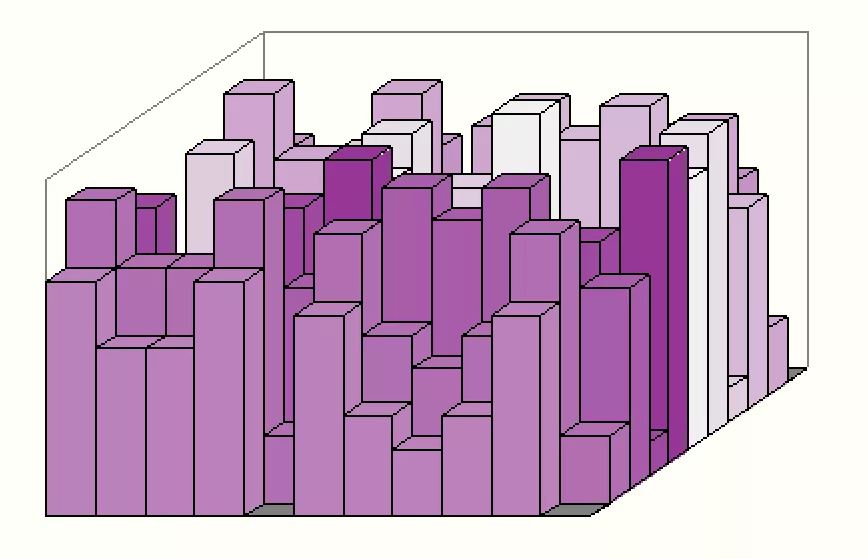
Well Depths / Widths
Each well depth in a quadratic diffuser is calculated using quarter-wavelength rules. Each well width is based upon a half wavelength rule. You can calculate any well depth using the modulus formula. The quadratic diffuser has a frequency response just like a speaker. A speaker produces energy by using electrical energy to power a driver that moves back and forth to produce waves of energy. It is an active device. A quadratic diffuser is a passive device that receives reflected energy from the speaker and room and then the reflected/direct energy enters the individual wells of the diffuser and is then transmitted back into the room in a 180-degree hemispherical array into the room depending on the diffusers physical position.
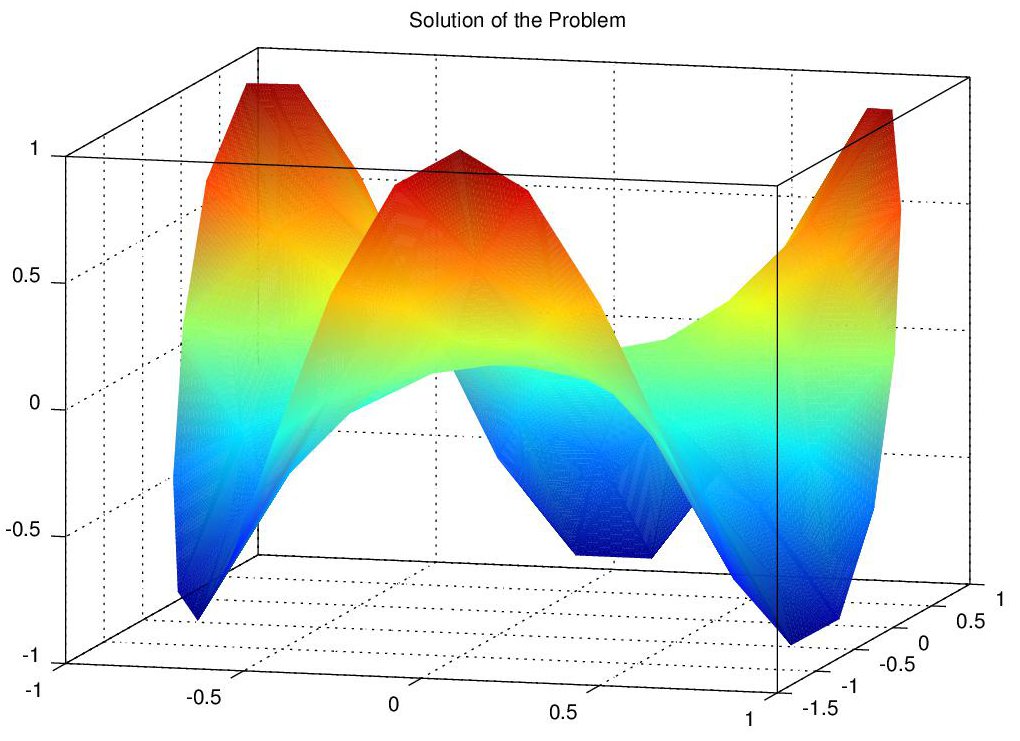
One Dimensional Diffusion
A one-dimensional diffuser is a series of wells or troughs that are physically positioned in a vertical or a horizontal position. The vertically positioned diffuser redistributes energy in a horizontal array that is a 180-degree radiation pattern. A horizontally positioned diffuser spreads sound out in a 180-degree array in the vertical domain. They both redistribute energy back into the room in the opposite direction of their physical position. Which orientation to use in your room depends on many variables such as the distance from the diffuser to the listening position, the particular type of room usage, and many other variables. This methodology can be much more cost-effective than a Skyline® diffuser when you consider material and labor costs along with the load issue due to the excessive weight of the Skyline®.
Two – Dimensional Diffuser
When examining the Skyline® diffusers: pro and cons you must look at the function of the Skyline®. It is a two-dimensional diffuser and is capable of spreading the energy out in two dimensions. Now, your task becomes one of calculating where to place two-dimensional diffusion within your room. You see a lot of photos where two-dimensional diffusion is placed upon the ceiling. This is a good usage if your ceiling heights are low and you wish to have the most diffusion you can have per square foot of surface area. Diffusion minimizes the impact of large reflections so it tricks your brain localization systems into thinking the surface area you have placed the diffusion on is much farther away than its physical distance. In simple terms, it takes large reflections and breaks them up into smaller ones that are more difficult for the brain to localize. We can achieve two – dimensional diffusion by using a one-dimensional diffuser and positioning it in both a vertical and horizontal domain.
Checkerboard Pattern
You can achieve the same diffusion distribution by using a one -dimensional diffuser and positioning it in both a vertical and horizontal position. This methodology will achieve the same distribution arrays of energy at a much cheaper price point, fewer materials and labor, required for your usage and less mass or density that the existing structure must support. You alternate the positioning of each one-dimensional diffuser in a checkerboard pattern that produces the two dimensions of diffusion. The depth of each one-dimensional diffuser is based upon the prime number you have chosen for that particular room surface application. A one-dimensional diffuser based upon a prime number 7 is 4 1/2″ deep. A prime 11 is 9″ deep and a prime 13 is 12″ deep. As a general rule, it is best to choose the highest prime number you can still consider the distances from the diffuser to the listener.
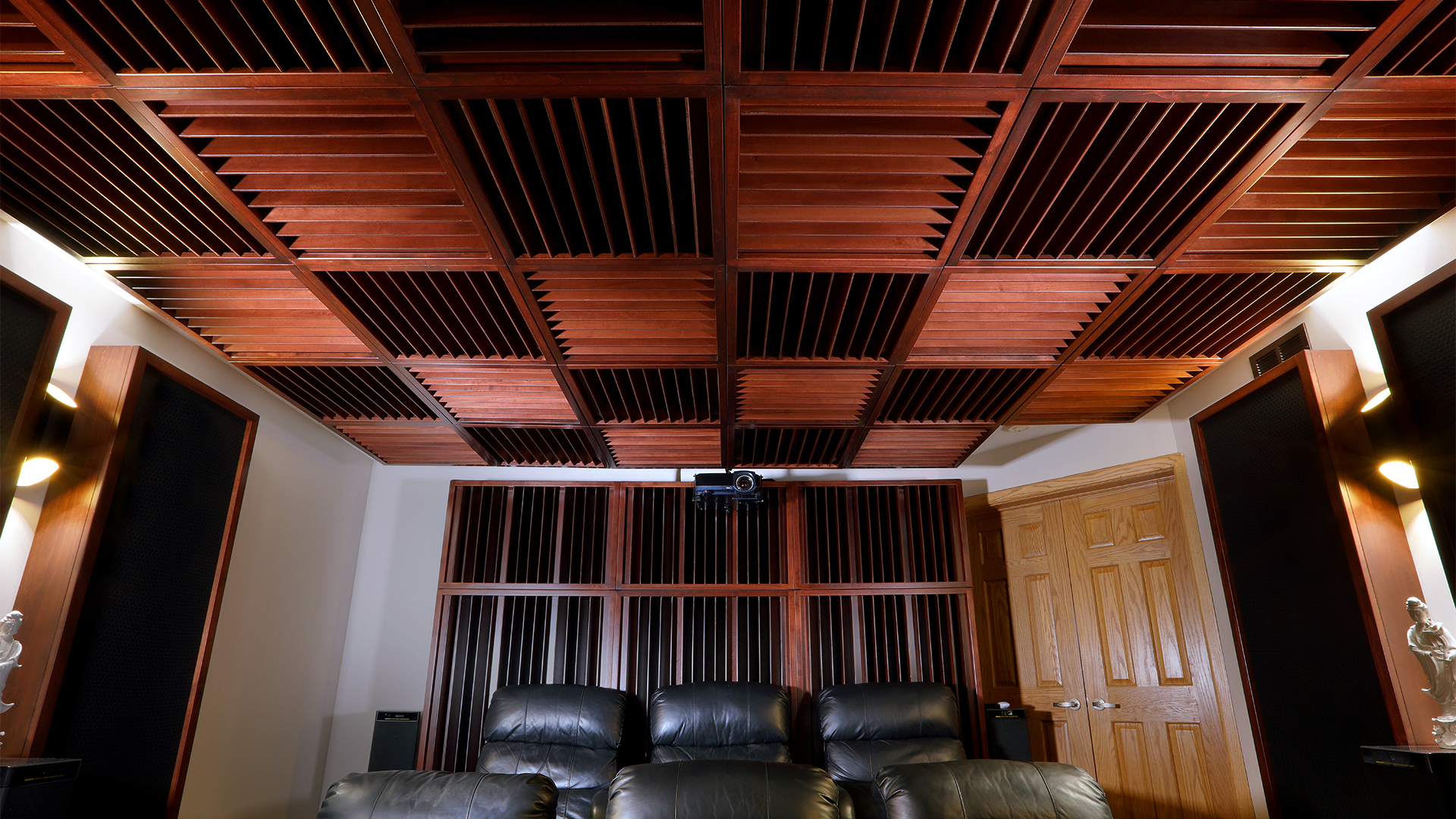
Skyline® diffusers: Pro and Cons
Since we have determined that our acoustical objective for our chosen surface area and usage requires two-dimensions of diffusion, our next task becomes which diffuser to use. Do we use a one-dimensional diffuser and position it in alternating vertical and horizontal arrays or do we use a skyline diffuser? Let’s examine how a Skyline® diffuser is made. It is a series of solid wood blocks that are stacked together in a pattern determined by the modulus formula. There can be over 100 blocks in some designs. The weight of this material will be excessive coming in at over 70 – 80 lbs. How will you support this weight if your chosen surface area to cover is the ceiling? Will the existing structure be able to handle the additional weight of 30 – 40 diffusers to ensure proper surface area coverage to realize the full benefit of diffusion. If not, have you budgeted in the existing costs of fortifying the ceiling to handle and manage the additional load? When considering Skyline® diffusers: pro and cons you must factor in the additional labor to build them, the additional solid wood costs, and the large amounts of weight and load you will be adding to the structure. Using a one-dimensional diffuser arranged in both the vertical and horizontal domains will achieve the same results as a Skyline® diffuser without the weight and costs.
DIY
We offer DIY build plans for quadratic diffusers. These plans show you how to build your own quadratic diffusers. They have material lists and component measurements that will allow you to cut and assemble your own units. You must have a table saw, work tables, routing, and joinery tools. A 3-5 year woodworking experience is preferred so you are familiar with all the building and cutting processes. We offer quadratic diffusers in prime numbers 7, 11, 13, 17, 19, and 23. Make sure you consult with us first on choosing the correct diffuser for your particular room usage. Fill out the information in this link and we can assist you with the proper prime number to build. Using the wrong prime number for your usage will produce phase issues which are distortion.
Quadratic diffusers are included in our All-In-One DIY Build Plans Bundle
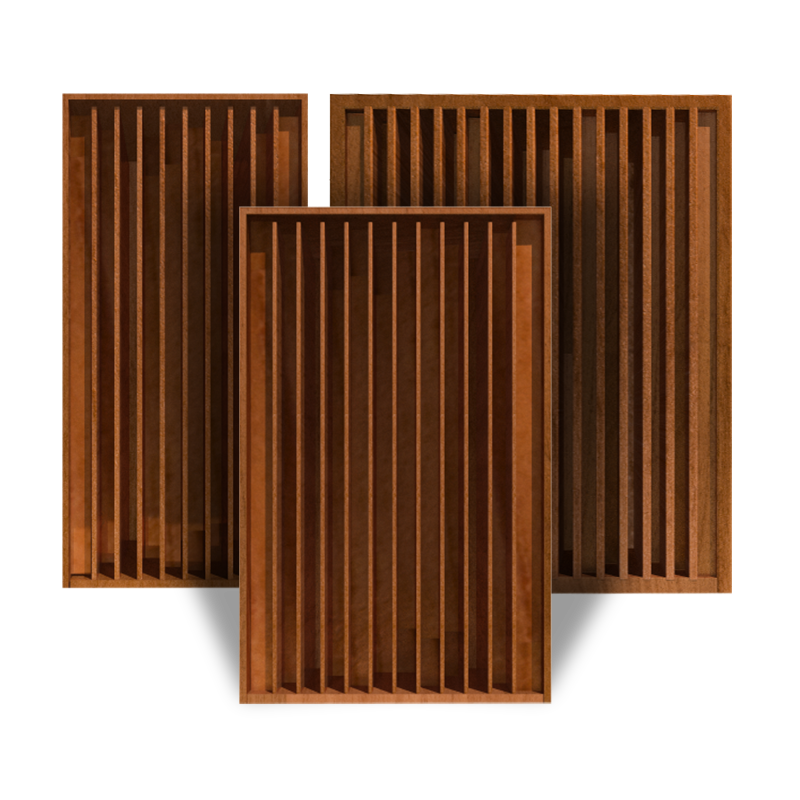
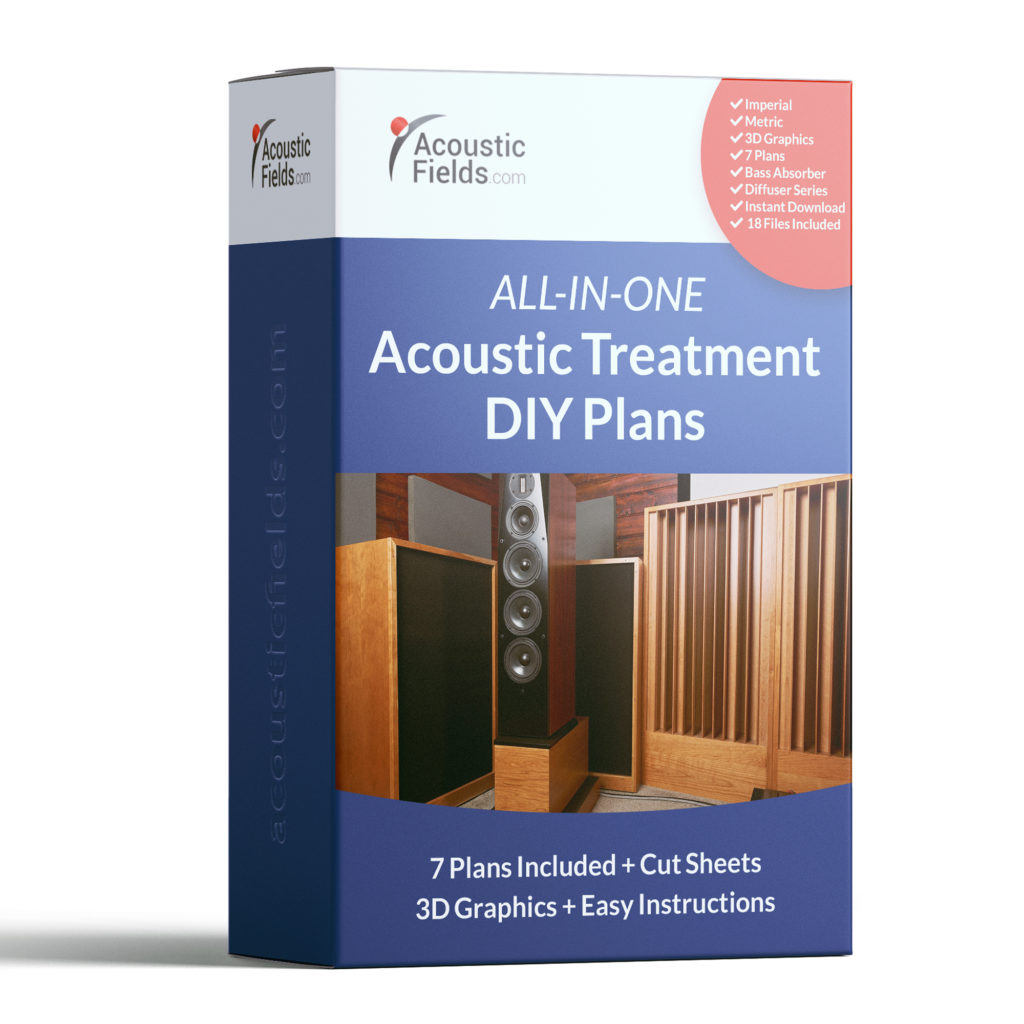
Free Room Analysis: https://www.acousticfields.com/free-room-analysis/
About Us At Acoustic Fields: https://www.acousticfields.com/about/


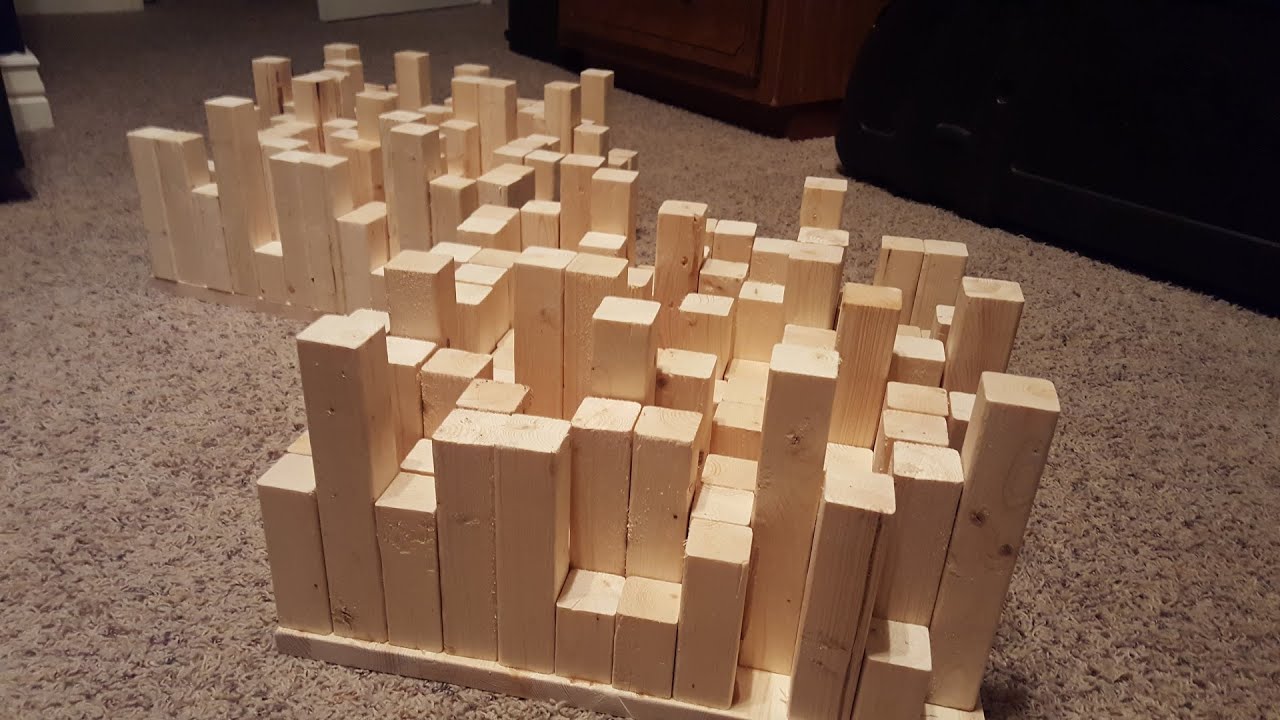





Very intersting posts! Thank you!
My wife is setting up a new Chiropractic office.
She can hear people talking in the room two doors down. Could Diffusers help contain voices within one room?
Thank you!!
M, Diffusion is a treatment technology. Diffusion is used to make a small room sound larger. It is not noise technology. With noise transmission issues, you must build a barrier between you and the noise source.